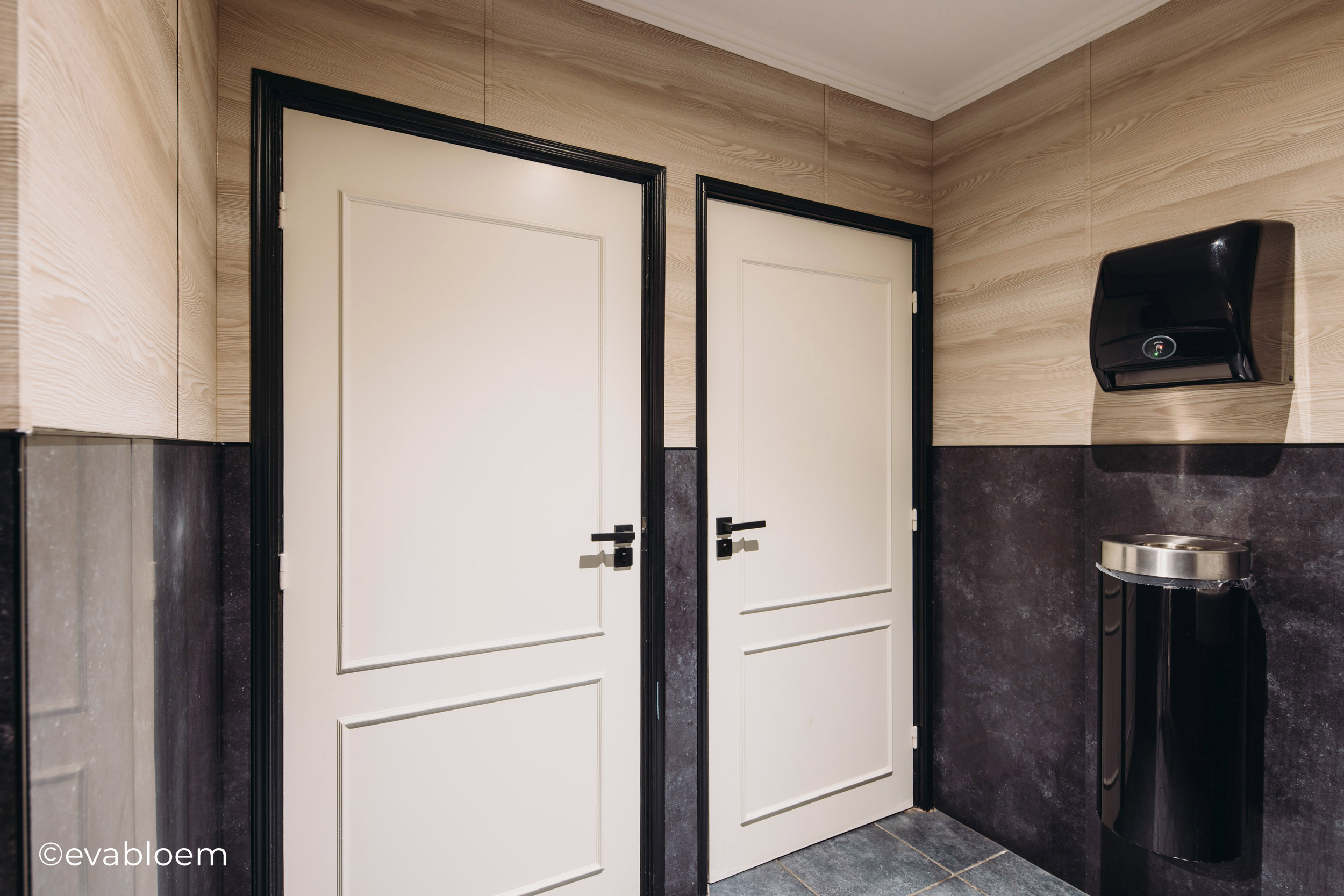
When it comes to designing sustainable spaces, bathrooms are often overlooked.
Yet they’re one of the most visited and most technically demanding areas in any building.
From water use to cleaning practices, every detail counts. And increasingly, architects and renovators are asking the right question: “What materials can make a bathroom design truly sustainable, without sacrificing durability or aesthetics?”
The rise of sustainable wall surfaces
Traditional tiled walls feature visible grout lines, require frequent maintenance, and have a significant environmental footprint during both production and installation.
That’s where large-format, low-impact panel materials offer a smarter alternative. One standout solution?
Sustonable, a circular surface made from post-consumer rPET bottles, pre-consumer recycled glass, and natural stone, delivering a low-impact surface solution with contemporary aesthetics and advanced durability.
Case study: Mr.Friendly sustainable restrooms
A recent collaboration with Mr. Friendly, a leader in waterless urinal systems and eco-smart design, demonstrates the impact of the right material. In a series of restroom renovations, Sustonable slabs were chosen as wall cladding, not just for their look, but for their functionality.
Here’s why:
- Refined aesthetic. The slab creates a continuous, elegant visual flow, bringing a sophisticated, contemporary look to any restroom environment.
- Made to last. Sustonable surfaces are scratch-resistant, non-porous, and VOC-free;ideal for high-traffic public or commercial restrooms.
- Low environmental impact. Each square meter contains the equivalent of around 100 post-consumer rPET bottles, and the slabs are 99% recyclable at end of life.
- Easy to install. Lightweight yet durable, they streamline renovation work, saving time and reducing waste.
Bathrooms and restrooms design often reflect the values of the spaces they serve, whether it’s a hotel, restaurant, airport, or workplace.
A clean, well-designed, and sustainable bathroom and restroom experience is no longer a nice-to-have. It’s expected.
Choosing wall surfaces like Sustonable means choosing:
- Less waste
- Fewer chemicals
- Easier cleaning
- And a tangible story of circular design, built right into the walls.
Looking to renovate responsibly?
If you’re planning a restroom renovation,whether at scale or as a single project, consider what your wall materials say about your space.
Or know more about where our materials make a positive impact


